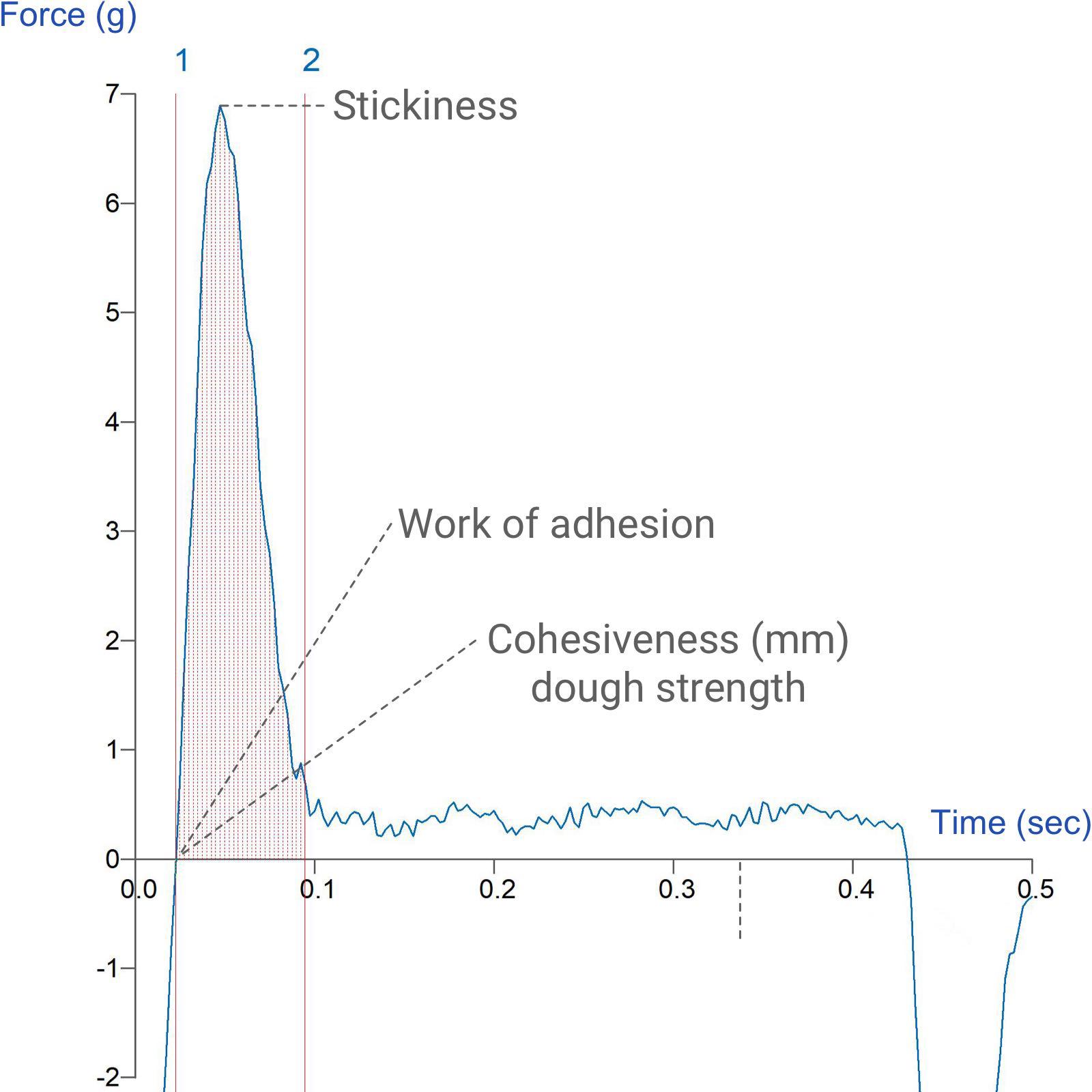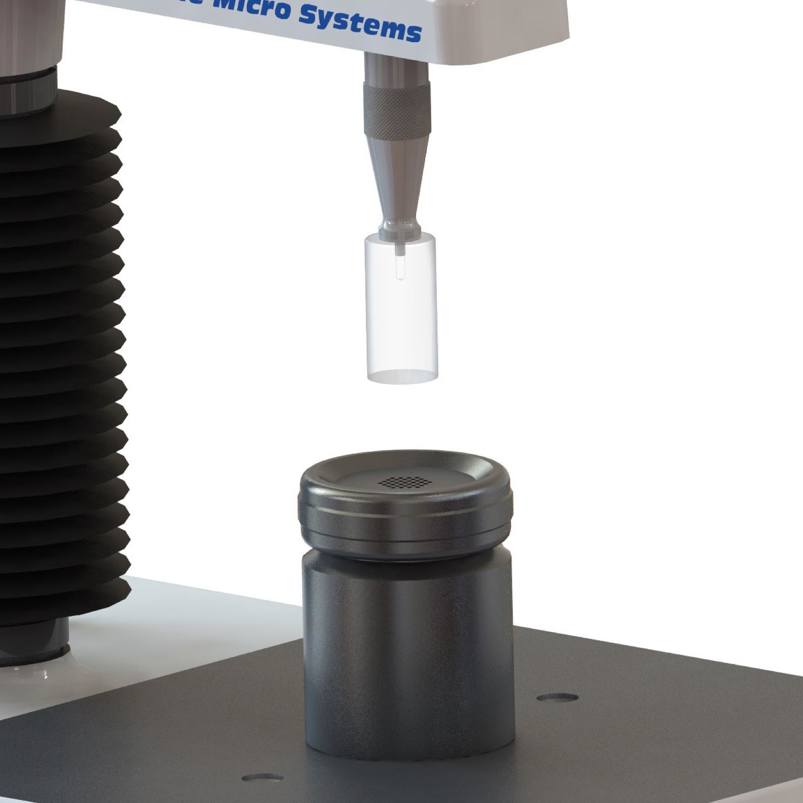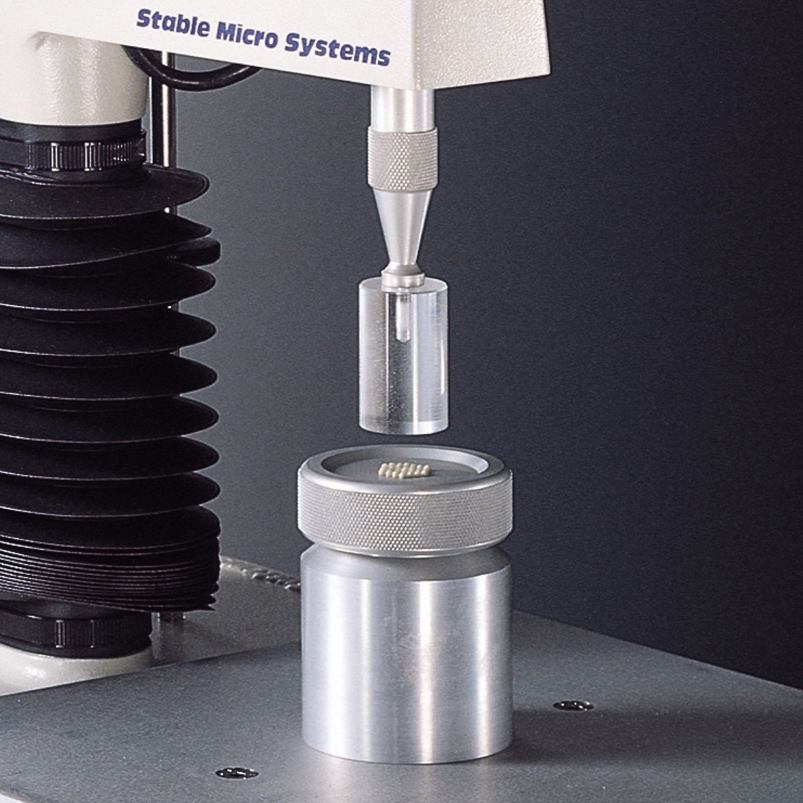Product overview
Stickiness, is an important rheological property at the mixing, dividing and rounding stage. A dough that is too sticky does not leave the mixer or rounder properly. If, on the other hand, a dough is not sticky enough, it is not formed properly by the rounder and the resulting product does not have the desired crumb structure. An appropriate level of stickiness is also needed during the sheeting and moulding step to help hold the folded layers of dough together and prevent large holes in the final baked product.
Dough stickiness can be a major issue in the bakery, causing hours of down time if not controlled. Several factors, such as overworking, addition of excess water, flour extraction, amount of water-soluble pentosans, differences in protein composition and proteolytic enzyme activity can give rise to such a problem. The ability to assess dough stickiness prior to bulk preparation is the key to predicting necessary processing changes. Previous attempts at quantifying dough stickiness were faced with the problem of making the dough separate from the probe at their interface in order to isolate the measurement of the stickiness property of dough, without measuring its viscous flow when the probe is pulled away. The Dough Stickiness Rig makes the correct measurement of dough stickiness possible.
The accuracy of the stickiness test is ensured by using a lapped finish cylinder probe, which has a uniform adherence surface, to make the measurement. This perspex cylinder probe is instructed to apply a chosen force to the surface of the dough for a chosen time (to achieve a good contact between the two surfaces) after which the probe is withdrawn quickly from the dough and the force to separate the probe and dough is measured. The maximum force value (‘stickiness’), the positive area (‘work of adhesion’) and the distance travelled before separation of the dough from the probe surface (‘degree of cohesiveness/dough strength’) are typical parameters collected from this test.
Examples of research to date include the investigation of dough stickiness due to overmixing, addition of excess water, overactivity of proteolytic enzymes, difference in wheat varieties and composition.
How does the Dough Stickiness Rig work?
Typical graph

Technical information
Ideal sample form
Viscous liquid and semi-solid materials which can be extruded with ease to create a surface which can then be tested by separating from a cylinder probe. This rig was originally developed for dough testing but has subsequently been used to test the adhesiveness of creams, lip gloss, caramel and solder paste, for example.
Benefits and limitations
- Allows successful separation of the probe from the dough surface whilst minimising viscous flow measurement.
- Several tests can be performed from one sample.
- Quick multi-parameter analysis for adhesion.
- Has also been used to assess the adhesiveness of caramel (for which a stainless steel lid was manufactured to avoid curvature of the holed extrusion region).
- Stronger material is required for lid if samples other than dough need to be extruded to avoid deformation of the extrusion region.
- Measured forces are commonly low due to sample size and therefore a 500g load cell is recommended.
Installation, Chemical compatability, Cleaning and maintenance
Installation
Full installation instructions are provided within the Education Zone of the latest Exponent/Connect software version and on the technical information sheet accompanying this product.
Chemical compatibility
Stable Micro Systems probes and attachments are commonly made from four materials: anodised aluminium (AA6082 T6), stainless steel (316 T), Delrin (acetyl copolymer) and Perspex (polycarbonate).
In general use, probes and attachments made from these materials will be suitable for testing food products and inert non-food materials.
The four materials listed above are not universally resistant to all types of chemicals and as such the compatibility of the probe/attachment material with the product (to be tested) must be established to prevent damage to the probes and attachments. If the compatibility of the product with the probe is unknown to the customer then the chemical information about the product (Material Safety Data Sheet or Product Data Sheet) should be submitted to Stable Micro Systems. Stable Micro Systems will then assess the suitability of the probe/attachment material for use with the product and advise accordingly. If this advice is not sought then Stable Micro Systems will not accept liability for probes/attachments damaged by chemical attack from the product being tested.
Cleaning and maintenance
All probes and attachments may be cleaned in warm (or hand hot) water using a mild detergent. A soft brush may be used but abrasive cleaning aids should be avoided. Stable Micro Systems products should not be microwaved or cleaned in a dishwasher.
Screw threads should be lightly lubricated after drying using a light lubricant, e.g. petroleum jelly, mineral oil. This will aid the fitting and unscrewing of the item. Each component of a probe or attachment should be wrapped separately when stored, to avoid scratching or chipping. This will safeguard against any unnecessary damage to the accessory.


